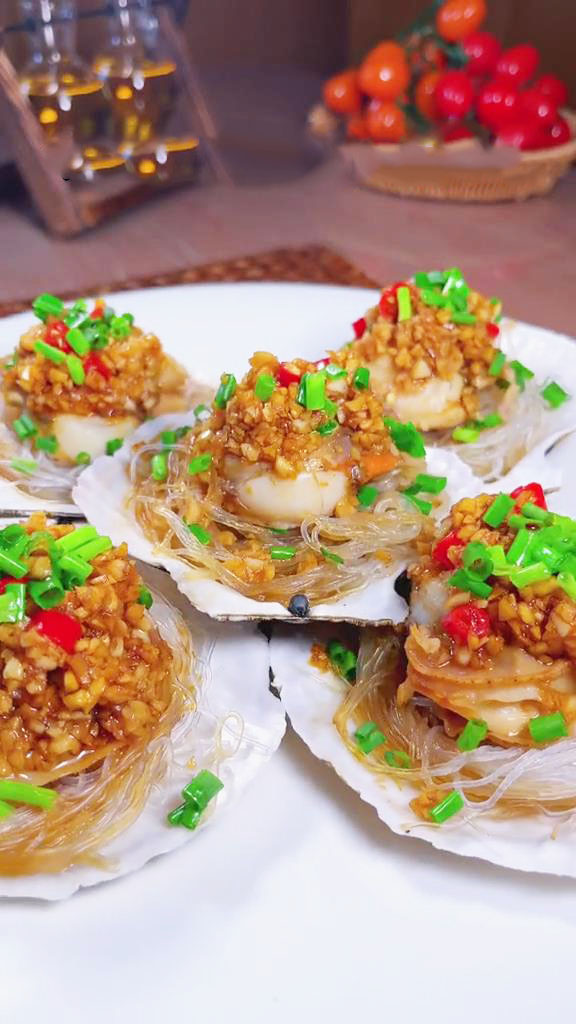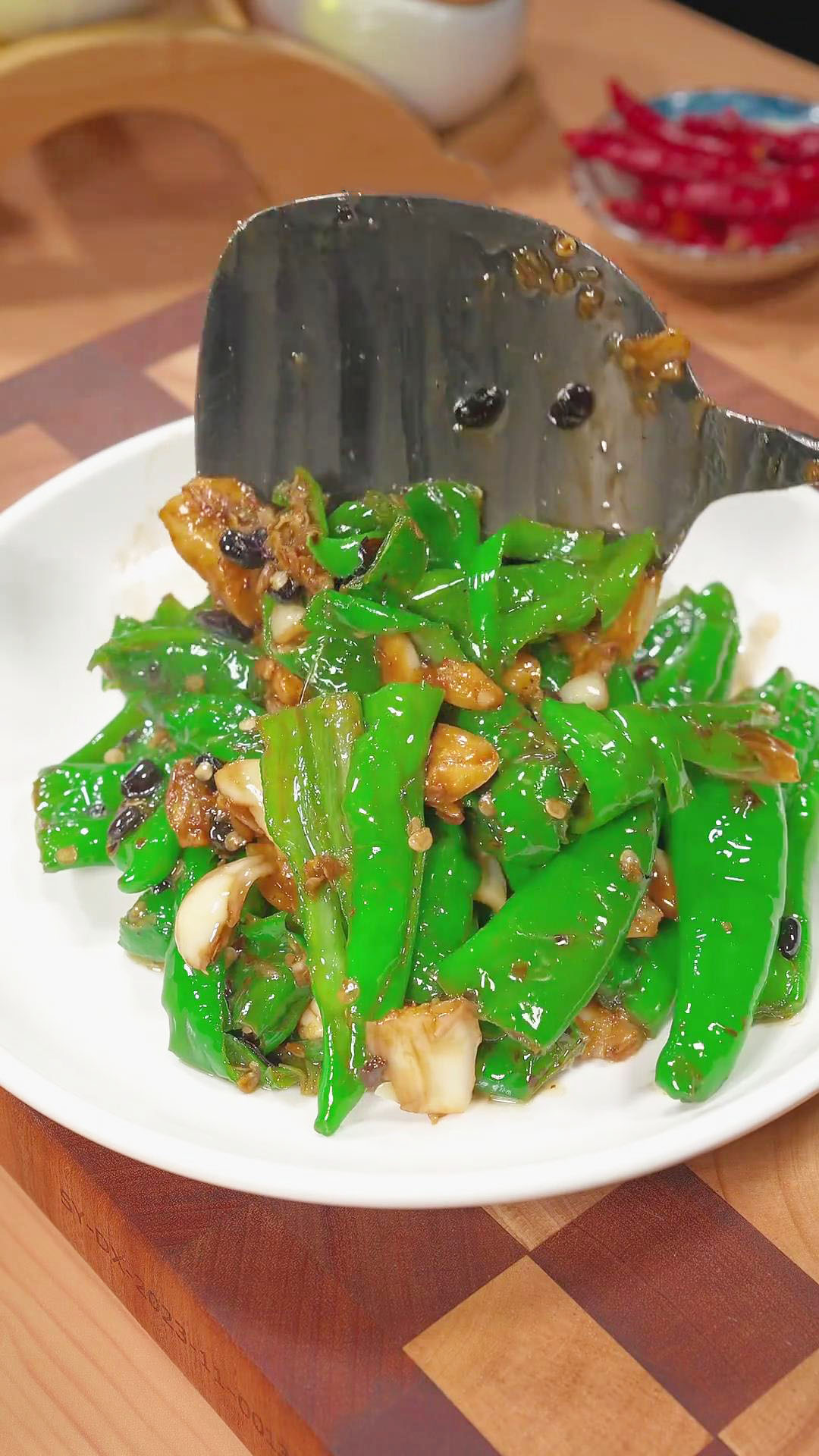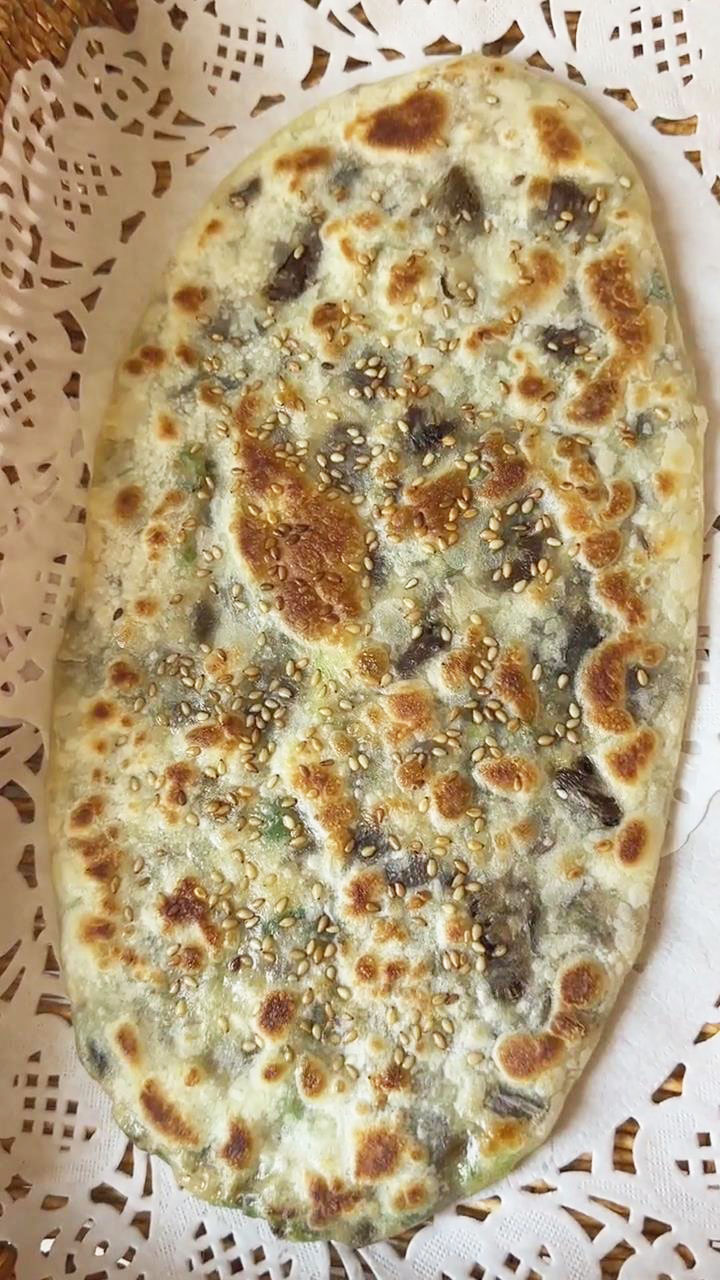If you love dumplings but want them bigger in size, this Chinese chive pocket recipe is what you are looking for. It is similar to the traditional Chinese dumplings, but it is even bigger and filled with lots of Chinese chives for a garlicky bite. You can customize the filling with your favorite ingredients, such as scrambled eggs and shrimp.
Chive Pockets: AKA Chinese Chive Dumplings/韭菜盒子
If you have been a regular reader of my recipes, you would have noticed how much I love fillings wrapped in dough. From dumplings to buns like Salted Egg Yolk Buns and pastries like Shaobing and wife cake, I love how easy they are to customize with my favorite ingredients. It’s also nice to find a recipe that uses a few staple ingredients, and this Chinese chive pockets recipe is one of them.
Chinese chive pocket or Jiucai hezi is similar to making a dumpling which requires you to make a dough wrapper made from flour, salt, and water. However, it’s notably simpler than making dumpling or wonton wrappers, so there’s no need to fret over that aspect. 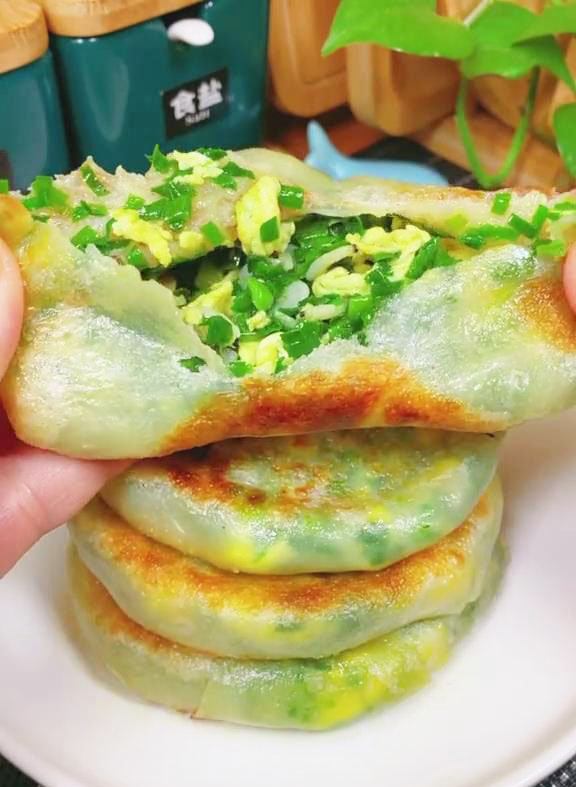
After kneading and shaping the dough into a wrapper, it is filled with a savory filling. In this recipe, the filling is loaded with Chinese chives, also known as Jiu Cai or 韭菜.
Along with Chinese chives, I also added some scrambled eggs, dried mini shrimp, and a few seasonings like oil, salt, bouillon powder, and oyster sauce. What’s great about this recipe is how easy it is to customize according to your desired shape and filling. Whether you want to make it a round or half moon pocket, or meatier or all-veggie, the options are all up to you.
How To Customize Your Chinese Chive Pockets
For The Dough
The type of dough used is hot water dough. I mixed flour with salt, freshly boiled water, and a bit of room-temperature water. This dough will turn golden brown and crispy when pan-fried with a bit of oil.
Although you can buy ready-made dumpling wrappers in grocery stores, these are usually too small and thin for Chinese chive pockets. Thus, it is more ideal to make your own by following my instructions below. I shaped the chive pockets into a flat round cake, but feel free to change the shape and follow some of my ideas in my guide, 7 Ways To Fold Dumplings.
- All-Purpose Flour: Just as I use all-purpose flour in recipes like Bunny Steamed Buns, Piggy Buns, and Peach Buns, it serves as the foundation for the dough. Although you can use other types of flour, it will yield a different texture. The texture of the dough should be soft and pliable for shaping. You can use gluten-free flour if you have gluten sensitivities, but the dough texture may be too dense and not as fluffy as all-purpose flour.
- Salt: Salt adds a better taste for a flat and bland dough. Not only does it serve as a flavoring agent, it also tightens gluten strands to make the dough stronger and more stable. Use table salt, kosher salt, or sea salt.
- Boiling water: Hot water dough needs boiling water to make rolling out the dough easier. It activates starch gelatinization, making the dough jelly and become soft. Moreover, boiling water also relaxes the flour’s protein, which helps shorten the rest time.
- Room temperature water: After mixing boiling water with flour, room temperature water or cold water is added to slow down the formation of gluten strands. Without this, the dough becomes more dense since gluten strands rapidly form with hot water.
- Optional flavoring ingredients: Add an undertone of nutty and earthy flavors with a bit of sesame oil. You can also use sesame oil when brushing the exterior of the dough balls. To help balance out the overall dough taste, a small amount of sugar helps without making it too sweet.
For The Filling
The main ingredient that should not be changed is Chinese chive. As for the others, you can replace them with your preferred seasonings, choice of protein, and vegetables. Change the filling according to your dietary preference, whether you are going for all-meat or all-veggie.
- Chinese chive: Chinese chives (韭菜) have longer and flatter green leaves than regular chives or garlic chives. It also has a stronger flavor profile, lending a mild onion taste and a strong garlicky taste. The closest substitutes are regular chives, green onions, or leeks for a similar flavor profile.
- Oil: Any cooking oil will do. Use olive, avocado, sesame, or safflower oil for a healthier option. If you want a neutral taste, go for peanut, soybean, or vegetable oil. You can use sesame oil for a strong nutty, Asian flavor.
- Scrambled eggs: Chives pair well with scrambled eggs. In my Chinese Chive and Egg Stir Fry recipe, I showcase how well these two ingredients complement each other. Feel free to add as many scrambled eggs as you desire to the dish. Let the freshly cooked scrambled eggs cool before combining it with the filling to prevent the filling from going too moist for assembling. If you’re looking for tips on how to prepare perfectly scrambled eggs, you can refer to my recipe for Tomato and Eggs Stir-Fry. If you have egg allergies or simply prefer an all-veggie alternative, you can use tofu instead. To make the tofu scramble, use crumbled extra firm tofu or tofu skins (yuba) and pan-fry it with nutritional yeast (optional for a cheesy taste), turmeric (for yellow eggy color), black salt (for umami, eggy taste), garlic powder, cumin, black pepper, soy milk (for fluffy moisture), and a bit of soy sauce (optional for extra umaminess).
- Dried mini shrimps: Another common pairing with chives is dried mini shrimp. It adds extra umami and seafood taste to the chive pockets. This special ingredient is available in Asian grocery stores or online markets like Amazon. You can replace dried shrimp with dried shrimp flakes, dried shrimp skin, or chopped fresh or frozen shrimp, or shrimp paste. If you are after the seafood taste without adding the shrimp, vegetarian or vegan alternatives to consider are seaweed, nori sheets, fish sauce or paste, or kelp.
- Salt: A filling mixture won’t be complete without a bit of salt that brings out the flavors. This helps the main ingredients absorb the flavors of the seasonings. Use any type of salt, such as sea salt, pink salt, and kosher salt and adjust to taste.
- Bouillon powder: Bouillon powder serves as a flavor enhancer. I used chicken bouillon powder, but you can use vegetable powder for a vegan or vegetarian alternative. As always, this ingredient is optional.
- Oyster sauce: Oyster sauce brings life to the filling with its umami and sweet taste. It does not taste like oyster, but it does lend a briny taste. You can substitute oyster sauce with regular soy sauce, hoisin sauce, teriyaki sauce, kecap manis, Worcestershire sauce with soy sauce and sugar, oyster-flavored sauce, or fish sauce.
- Optional alternatives and ingredients: You can make the filling with just chives, scrambled eggs, and oyster sauce or light soy sauce if you prefer a simpler filling. However, if you want other ways to customize it, here are some ideas:
- Sichuan pepper: This adds a numbing effect and citrusy taste.
- Chinese five spice powder: This adds a sweet, warm, and a hint of licorice-like taste.
- White pepper: This makes it musty with an introductory heat.
- Mung bean vermicelli noodles: This adds extra texture and nutritional value.
- Meat: You can add shredded or minced meat, such as chicken or pork for something meaty.
- Mushrooms: Dried shiitake mushrooms make it smoky and meaty.
Dough Texture: How To Get It Right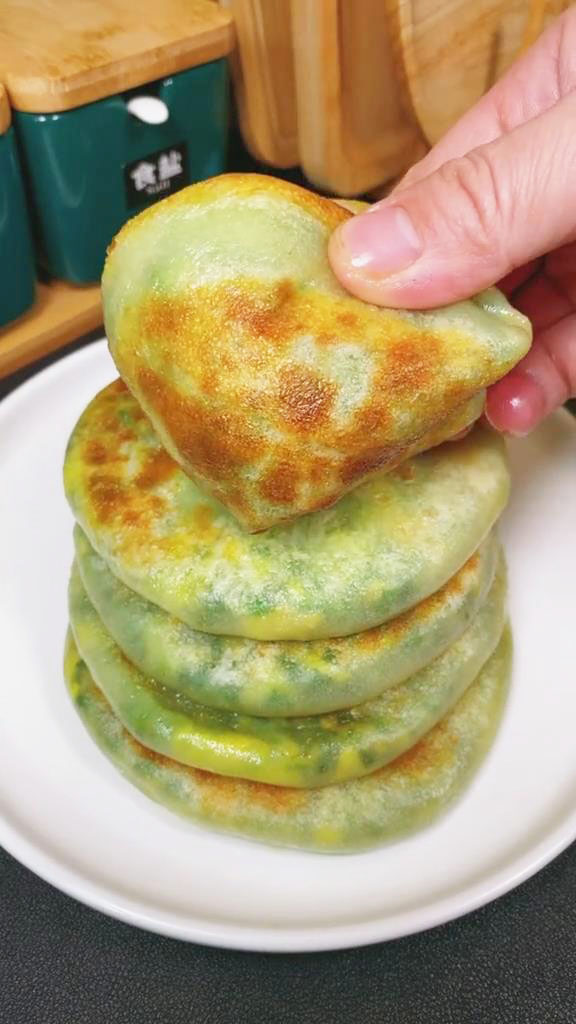
Do not skip this section if you are new to dough making. Below you will find my best tips on how to get the best dough consistency for the perfect chive pocket. Before beginning the recipe steps, keep these tips in mind:
- To measure dough ingredients accurately, use a kitchen weighing scale. When it comes to dough making, the ingredients are always measured by weight since it won’t be the same when measuring in cup measurement. When you measure accurately, you ensure that your dough is pliable and supple.
- The dough consistency can be gradually adjusted if necessary. Sometimes you may end up with a dough that may be too soft or too stiff. The dough you are going for should be soft, bouncy, and non-sticky. It should be able to hold its shape. If the dough is too soft or sticky, gradually add flour in small amounts. If it is too stiff, gradually add water until you get the right texture.
- Keep kneading the dough to achieve the ideal texture. Knead until you form a smooth, pliable dough. If the dough keeps sticking to the surface, dust the surface with a bit of flour.
- Let the dough rest. Resting the dough is a crucial aspect of dough making. During the resting step, it allows the glutens to relax and hydrate. After resting, the dough can hold its shape better and does not easily deform. The resting step is done once after the dough is formed into small balls and brushed in oil.
Ingredients And Kitchenware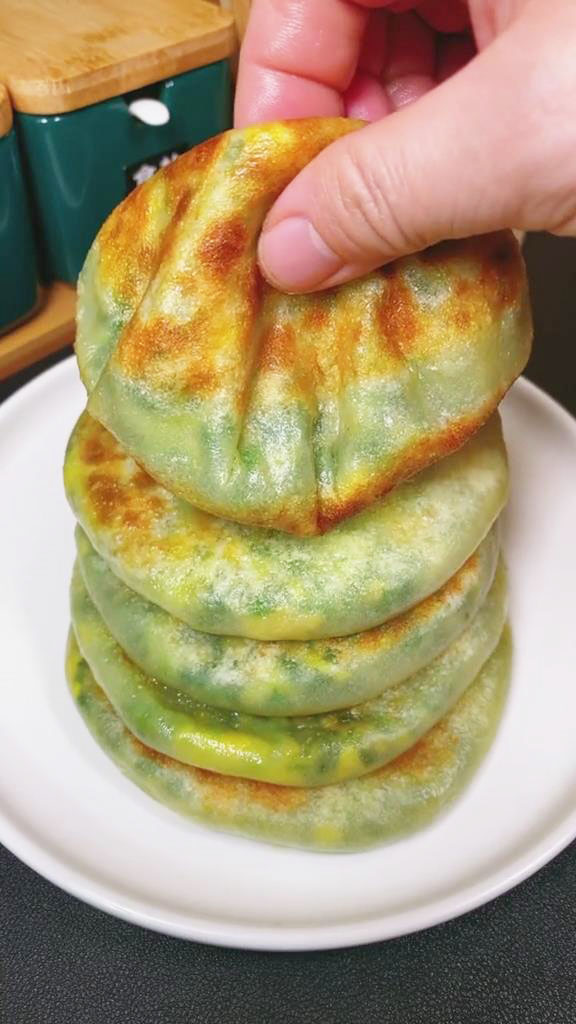
When it comes to dough making, the typical baking tools you need are a dough cutter and a rolling pin. It helps to use a non-stick pan as well to prevent the chive pockets from sticking and burning. Here are the suggested kitchenware to use and the ingredients to prepare:
Kitchenware
- Mixing bowls
- Dough cutter
- Pastry brush
- Rolling pin
- Non-stick pan
Ingredients
Dough
- 300g of flour
- 3g of salt
- 150ml freshly boiled water
- 80ml room temperature water
Filling (Adjust the amount accordingly)
- 1 large bowl of chopped Chinese chives
- A drizzle of oil
- 2-3 eggs for scrambled eggs
- 1/2 cup of dried mini shrimp
- 1 tsp of salt
- 1 tsp of chicken bouillon powder, optional
- 1 tbsp of oyster sauce
Instructions To Make Chinese Chive Pockets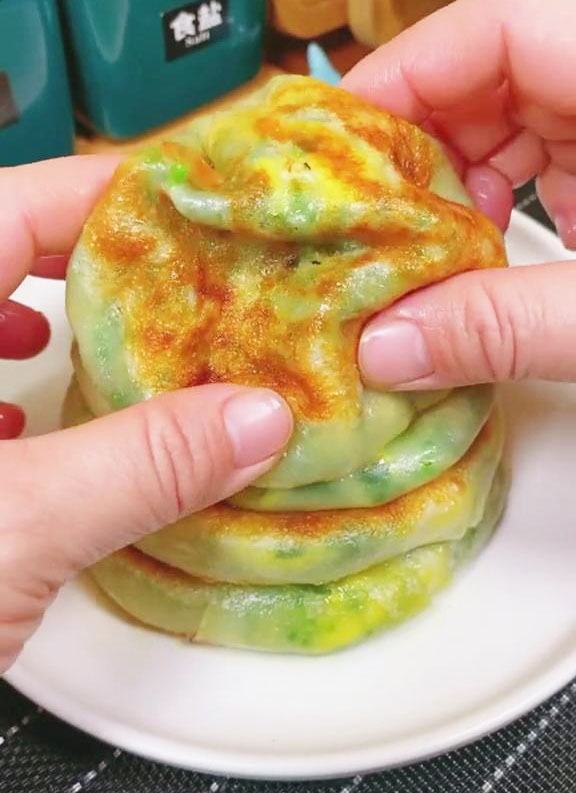
Make the dough, combine the filling ingredients, shape the Chinese chive pockets, and pan-fry them. These are the main steps to remember for the recipe. Watch my Instagram or TikTok tutorial video to learn more.
How did it go with this recipe? What were your filling ingredients? Share your version of this recipe by posting a photo and tagging me @kitchenmisadventures.
- Make the dough. Mix the flour and salt in a bowl. Then, pour boiling water and mix until it forms chunks. Lastly, mix in room temperature water and knead into a soft dough.
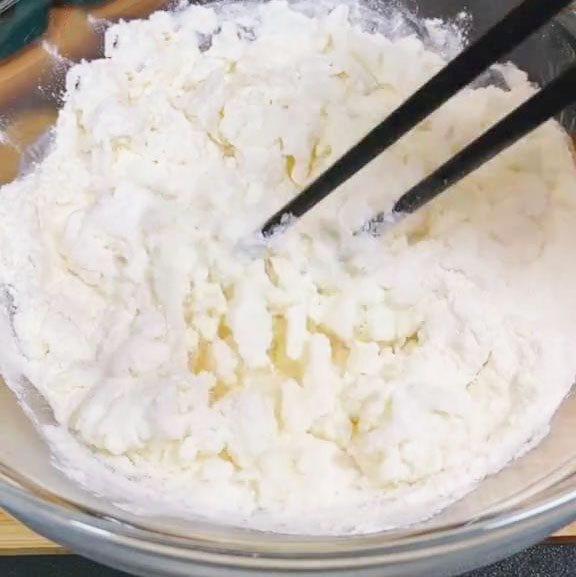
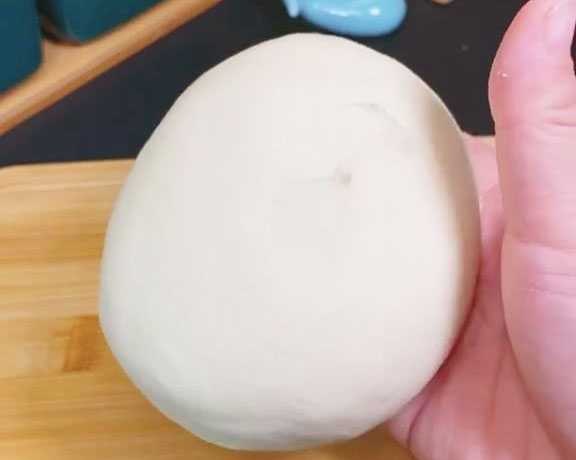
- Roll the dough into a log. Cut the dough into 8 pieces using a dough cutter.
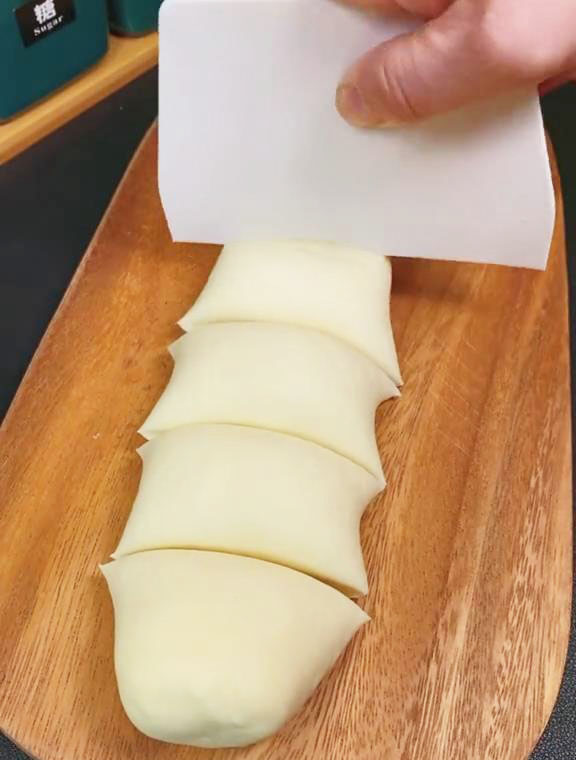
- Shape each piece into a round ball and brush it with oil. Let it rest for half an hour.
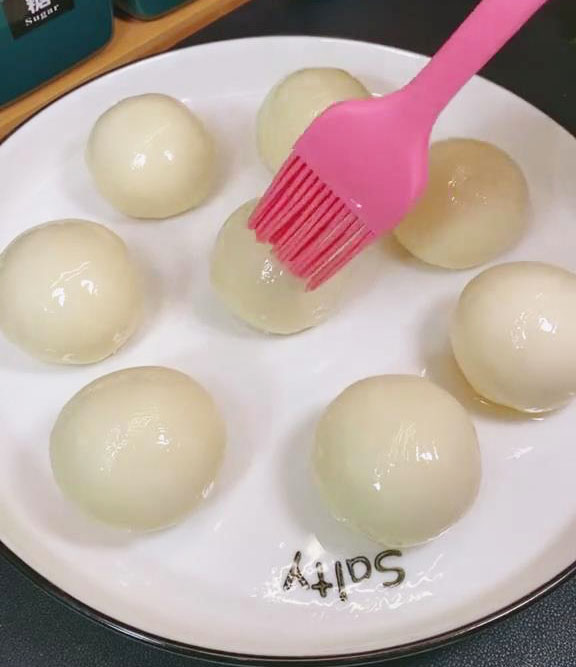
- Prepare the filling ingredients by washing the Chinese chives thoroughly to remove any dirt or debris. Then, drain the excess water from the chives. Next, chop the Chinese chives into small pieces. Meanwhile, cook the scrambled eggs until they are fully cooked and set. You can refer to my recipe for Tomato and Eggs Stir-Fry to learn how to cook scrambled eggs. Once cooked, allow the scrambled eggs to cool before using them in the filling mixture.

- Meanwhile, prepare the filling by stirring together chopped Chinese chives, oil, scrambled eggs, dried mini shrimps, salt, chicken bouillon powder(optional), and oyster sauce.
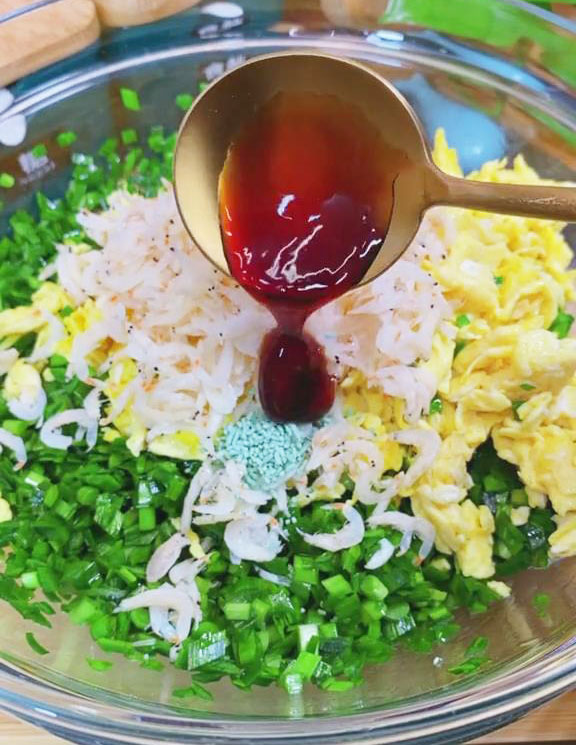

- Take a piece of dough ball and roll it into a thin circular wrapper using a rolling pin. Place some filling in the center and seal the dough wrapper by bringing the edges together.
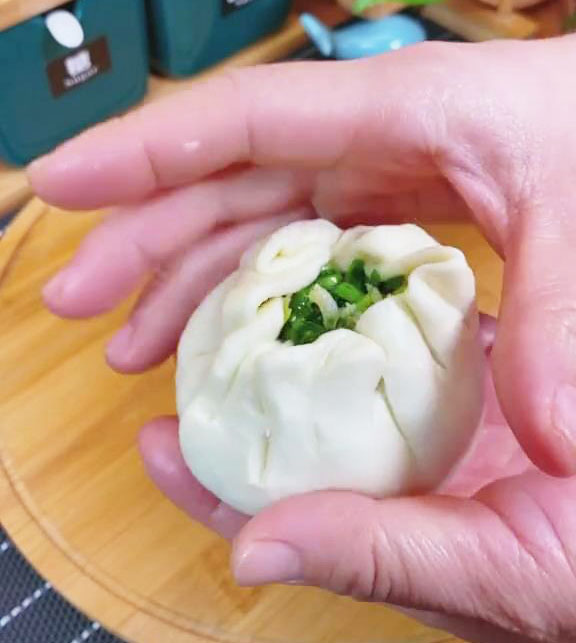
- Pinch the edges to seal and smoothen it to form a large ball.
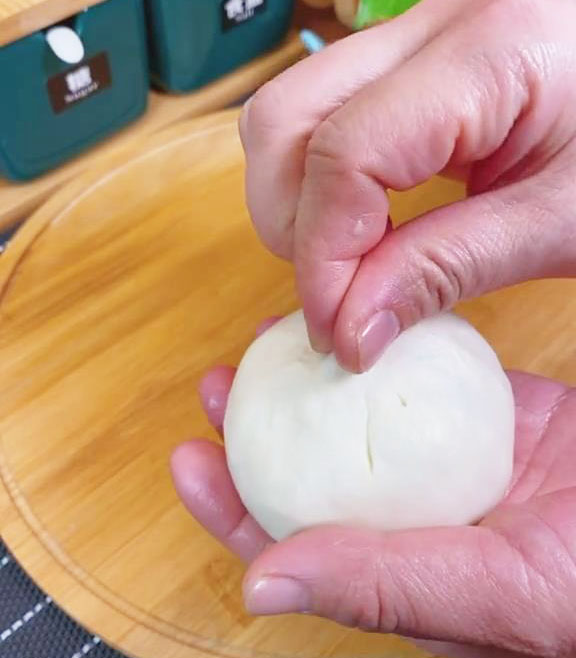
- Use your hand to flatten it into a round chive pocket.
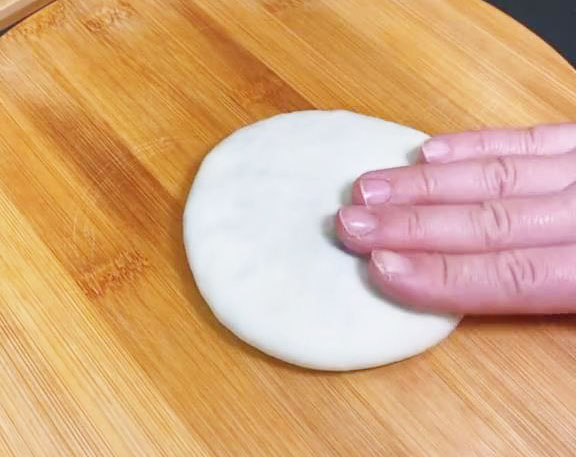
- Heat some oil in a pan over medium-low heat. Carefully place the chive pockets in the pan and cook them until they are golden brown on one side. Then, gently brush oil on the top side of the chive pockets before flipping them over to cook the other side. This helps ensure that both sides are evenly cooked and golden brown.
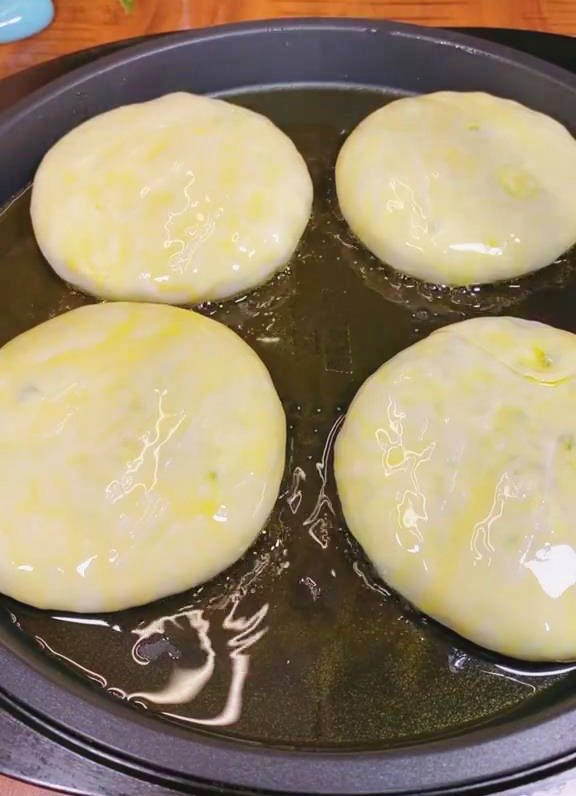
- Cook until golden brown on both sides. Enjoy while hot and fresh! Serve it with chili oil, Chinkiang vinegar, dumpling sauce, or soy sauce.
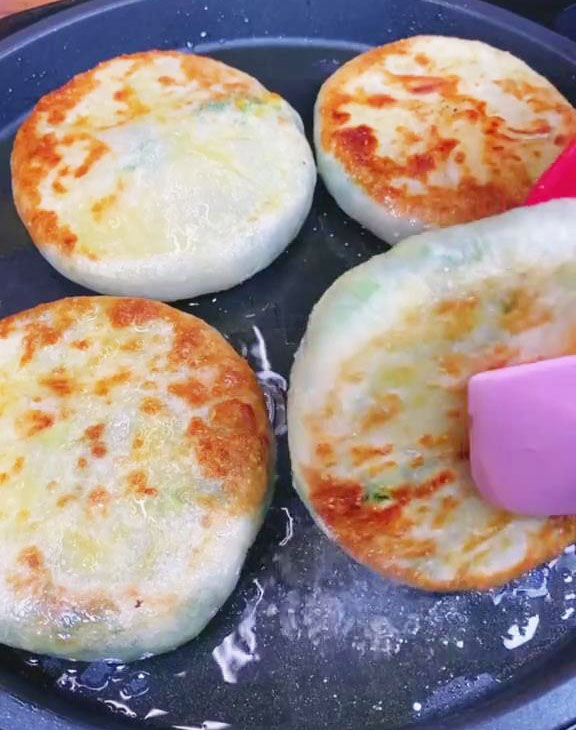
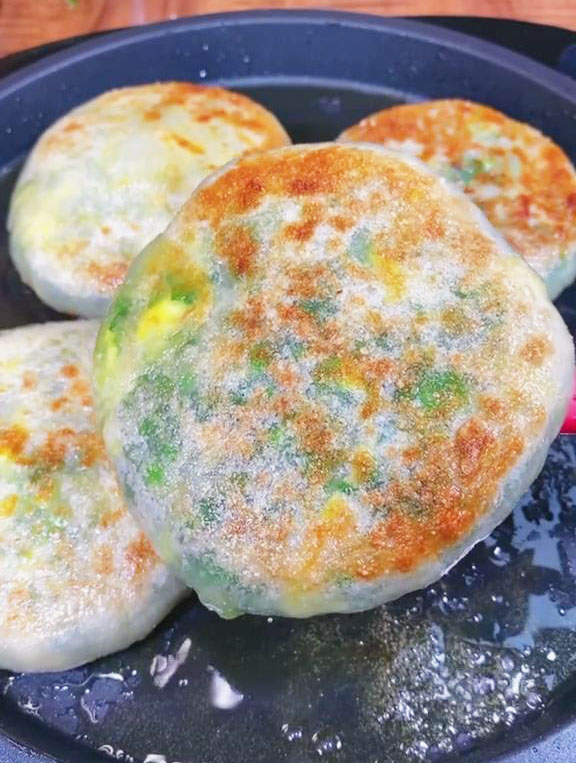
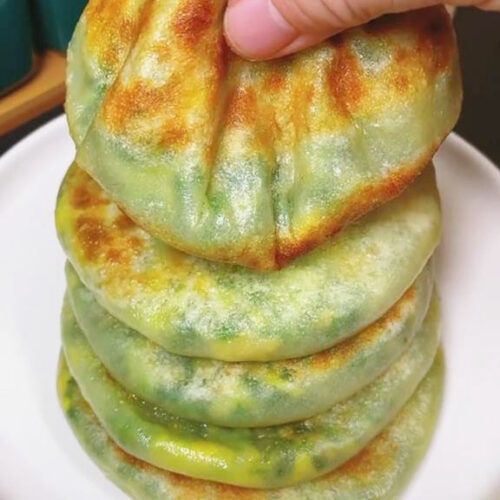
Chinese Chive Pockets (Jiucai hezi)
Ingredients
Dough
- 300 g of flour
- 3 g of salt
- 150 ml freshly boiled water
- 80 ml room temperature water
Filling (Adjust the amount accordingly)
- 1 large bowl of chopped Chinese chives
- A drizzle of oil
- 2-3 eggs for scrambled eggs
- 1/2 cup of dried mini shrimp
- 1 tsp of salt
- 1 tsp of chicken bouillon powder optional
- 1 tbsp of oyster sauce
Instructions
- Make the dough. Mix the flour and salt in a bowl. Then, pour boiling water and mix until it forms chunks. Lastly, mix in room temperature water and knead into a soft dough.
- Roll the dough into a log. Cut the dough into 8 pieces using a dough cutter.
- Shape each piece into a round ball and brush it with oil. Let it rest for half an hour.
- Prepare the filling ingredients by washing the Chinese chives thoroughly to remove any dirt or debris. Then, drain the excess water from the chives. Next, chop the Chinese chives into small pieces. Meanwhile, cook the scrambled eggs until they are fully cooked and set. You can refer to my recipe for Tomato and Eggs Stir-Fry to learn how to cook scrambled eggs. Once cooked, allow the scrambled eggs to cool before using them in the filling mixture.
- Meanwhile, prepare the filling by stirring together chopped Chinese chives, oil, scrambled eggs, dried mini shrimps, salt, chicken bouillon powder(optional), and oyster sauce.
- Take a piece of dough ball and roll it into a thin circular wrapper using a rolling pin. Place some filling in the center and seal the dough wrapper by bringing the edges together.
- Pinch the edges to seal and smoothen it to form a large ball.
- Use your hand to flatten it into a round chive pocket.
- Heat some oil in a pan over medium-low heat. Carefully place the chive pockets in the pan and cook them until they are golden brown on one side. Then, gently brush oil on the top side of the chive pockets before flipping them over to cook the other side. This helps ensure that both sides are evenly cooked and golden brown.
- Cook until golden brown on both sides. Enjoy while hot and fresh! Serve it with chili oil, Chinkiang vinegar, dumpling sauce, or soy sauce.

